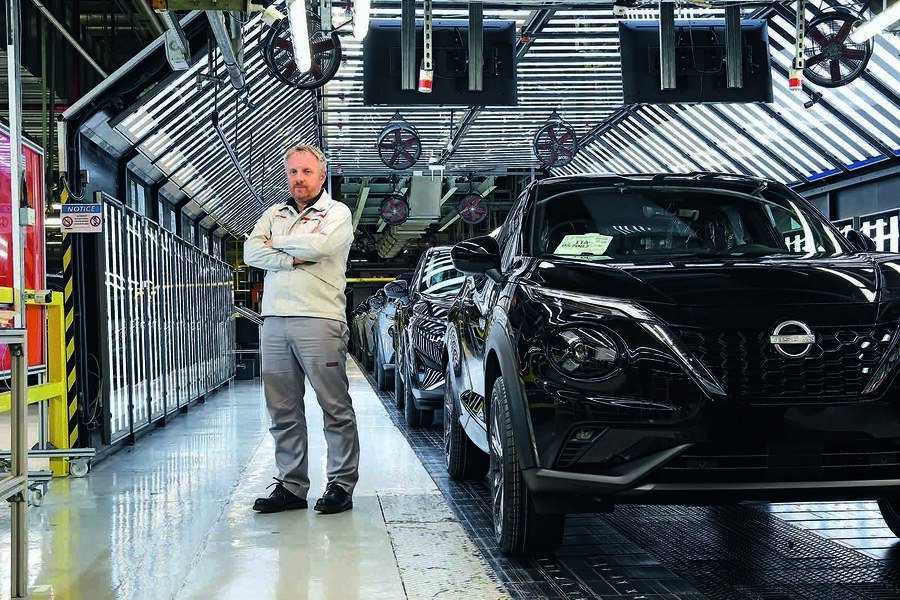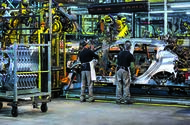Nissan’s two-week Christmas shutdown provides vital breathing space to upgrade and improve its Sunderland plant
Switch off your computer, turn out the lights, don’t leave any milk in the fridge: it’s the Christmas break, so goodbye work, see you next year. But what if you’re leaving behind something rather bigger than an office – such as a car factory?
Industry calls it the Christmas shutdown (well, what else were they going to name it?), and for car manufacturers such as Nissan, with its Sunderland production lines, it lasts two weeks – this year from Saturday 21 December to Sunday 5 January inclusive.
How do you switch off a production line? With a big red button that turns off the power, forcing the cars to a shuddery halt and leaving the assembly workers hanging in mid-operation? “Not exactly,” says Lee Watson, production director at the Sunderland plant. He joined Nissan in 1999, building the then new Almera, and has worked his way up through the ranks, so he knows a thing or two about making cars.
“Instead, beginning with the day shift at 7am, we might start emptying the line – a process that won’t be completed until around 10pm, towards the end of the night shift the same day. The body shop starts emptying around 10.30am, which then trickles through the whole production line to final inspection.”
That’s one myth laid to rest, then. The other is that the factory is emptied of people and plunged into darkness for two weeks. “Shutdowns are the way we progress,” explains Watson. “Without them, we can’t renew technology, and we will never improve without these periods of stopping to install, check and replace.”
So while he’s away, albeit ready to scoot back if required, his colleagues in engineering, who have been planning for this moment for at least 18 months, along with the 400 or so specialist sub-contractors they’ve engaged, will descend on the plant to make the lines fit for the next production cycle.
“When people think of a production line, they think of a chain,” says Watson. “The chain is there somewhere, but the line itself is evolving and changing within and around it. It has to adapt to different cars travelling at different speeds along it. So during shutdown, we might install a new production line and join it up to the existing one.
“For example, we used the two-week summer shutdown to install the new battery marriage station for the next Leaf. This Christmas, we will make sure it’s ready, but in such a way that, until it ’s in operation, other models are able to pass through without using it. Also this shutdown, we will commission the new lasers and robot welding for the new model’s body sides.”

Among the things Watson and the engineers must plan for are whether or not to ‘gap’ the production lines and where.
“If we’re not emptying the line completely, gapping it is where we remove perhaps two or three cars from it to give the engineers access to the workstations and existing equipment,” he explains.
“It sounds straightforward, but you have to time production to the second, so when shutdown happens, any gaps you’ve created fall in the right place.”
Among his jobs this Christmas will be ensuring production line two is upgraded to accept the ‘new battery car’, which I presume is factory-speak for the Mk3 Leaf.
It’s a bit like working out where to stand on a station platform so the train stops with the carriage doors right in front of you. So if Watson needs a three-car gap at workstation 75 (there are more than 1000 on each line), he has to time how far down the line 75 is from one, so that when the line stops at shutdown the gap is in the right place.
“It’s a nightmare to arrange,” he says, “but if you’re not doing big installs, gaps in the line are a help. But the line must stay fixed through shutdown so that when you start up again, you’re building cars straight away.”
Before then, Watson’s team visit the line to check all new and existing equipment works as it should. Naturally, the factory’s 4000 returning assembly workers will be a little rusty; they may also have new equipment with which to familiarise themselves.
For the first shifts, the lines run slower than usual. After that, it’s all systems go, and more new Qashqais, Jukes and, shortly, all-new Leafs will begin rolling off the lines in 2025 – and Watson will start preparing for Christmas shutdown 2027.
Source: Autocar
